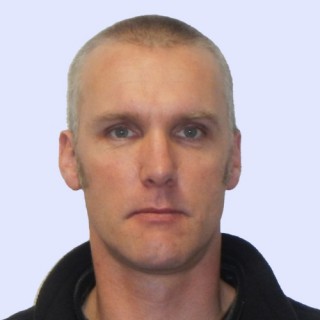Aerial surveillance for detecting new weed incursions
While the populations of sea spurge in New Zealand are still small and restricted in range, plants can disperse and form large monocultures very quickly. Consequently, Biosecurity NZ, DOC, Waikato Regional Council, Taranaki Regional Council, Horizons Regional Council, Greater Wellington Regional Council and Auckland Council are working together on an eradication programme. The programme is focused on early detection so that plants can be removed before they set seed. Aerial surveillance of the New Zealand coastline was regarded as a potentially useful tool to help in the early detection and removal of sea spurge incursions.

Sea spurge
“The first step in the project is to use drones to determine whether a technique can be developed to detect this species on a small scale,” said Paul Peterson, who is leading the project at MWLR. Both an RGB phantom drone and an M600 drone fitted with a hyperspectral camera were used in the pilot trial. “While the RGB footage allows us to capture visible light over three broad spectral bands, the hyperspectral camera splits the light into 269 spectral bands, including those in the near-infrared range, which are not visible to the human eye,” explained Andrew McMillan (Environmental Analytics NZ Ltd). “This allows for a more fine-tuned analysis of what spectra are being reflected by plants so that we can look for a distinctive signature. If a signature unique to sea spurge is found, then we may be able to use this over a wider scale to map the distribution of the weed,” added James Griffiths (DOC), who is coordinating the programme.
Imagery was collected from approximately 1 ha of sand dunes containing sea spurge at each of three sites at Waikawa (Marlborough), Waikawa (Manawatū-Whanganui) and Paraparaumu (Kapiti Coast). Once the imagery had been collected, the data were processed by a team led by Grey Harris (Canterbury University). “From the wealth of spectral information available, three new ‘diagnostic’ bands were created that highlighted the differences between sea spurge and other plant species,” said Grey. Machine-assisted segmentation techniques were then used to create a mask, and a pixel-based neural network was trained to find sea spurge automatically. “Object-based classification would have been faster to run, but due to the lack of training data available this was not practical,” Grey added. Further pixel-based training was required to remove false positives and to focus on the centre of multiple pixel hits assumed to be sea spurge plants.
Results from this pilot trial look promising, but several questions remain if the method is to be used in different environments and/or scaled up. The hyperspectral camera mounted on the drone captured imagery at a resolution of 1–2 cm over approximately 1 ha in the pilot trial. This produced a vast amount of data at a level of detail that would not be practical or possible to collect from higher altitudes.
Not only may resolution become a limiting factor when trying to scale up the method, but many other variables, such as lighting (including sun angle and shadowing), variation in plant colour, and confusion with other vegetation may become more difficult to resolve. Furthermore, while sea spurge has been found growing up to half a metre tall in New Zealand, many plants are smaller and may be difficult to see from higher altitudes, especially new infestations. Accurate positioning of imagery to relocate individual plants also becomes more challenging.
New funding has been secured to test the method using a fixed-wing aircraft, which may provide the information we need to determine if aerial surveillance could become a realistic tool to help detect and subsequently eradicate new weed incursions in New Zealand.
This project was funded by the Department of Conservation and the Ministry for Primary Industries.
Contact

